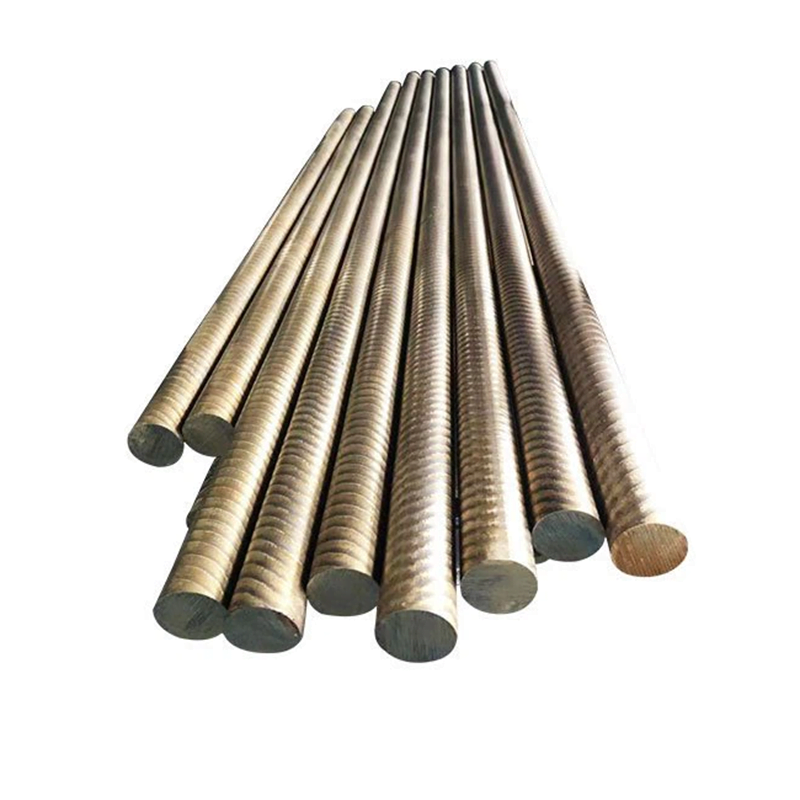
In the world of mechanical engineering, selecting the right material for bearings is crucial for ensuring optimal performance, longevity, and cost-effectiveness. Aluminum bronze has emerged as a popular choice for many bearing applications, offering a unique balance of desirable properties and reasonable cost. This article explores the use of aluminum bronze in mechanical bearings, examining its performance characteristics and how it measures up in terms of cost-effectiveness.
Understanding Aluminum Bronze
Aluminum bronze is a family of copper-based alloys that contain aluminum as the primary alloying element, often with additional elements such as iron, nickel, and manganese. These alloys are known for their:
- Força elevada
- Excelente resistência à corrosão
- Boa resistência ao desgaste
- Propriedades de baixo atrito
- Condutividade térmica
Aluminum Bronze in Bearing Applications
Aluminum bronze is widely used in various bearing applications, including:
- Plain bearings and bushings
- Thrust washers
- Wear plates
- Gear bearings
- Sliding elements in heavy machinery
Its popularity in these applications stems from its unique combination of properties that make it well-suited for demanding environments.
Características de desempenho
Let’s examine the key performance characteristics of aluminum bronze bearings:
1. Strength and Durability
Aluminum bronze bearings offer high strength and excellent durability. They can withstand heavy loads and maintain their structural integrity under stress. This makes them suitable for applications in heavy machinery and equipment where reliability is crucial.
2. Wear Resistance
One of the standout features of aluminum bronze is its exceptional wear resistance. This property is particularly important in bearing applications, as it directly impacts the longevity and performance of the component. Aluminum bronze bearings can maintain their dimensional stability and surface finish over extended periods of use, reducing the need for frequent replacements.
3. Resistência à corrosão
Aluminum bronze exhibits excellent corrosion resistance, especially in marine and industrial environments. This property makes it an ideal choice for bearings exposed to harsh conditions, such as those in chemical processing plants or offshore equipment.
4. Low Friction Coefficient
Aluminum bronze has a naturally low coefficient of friction, which is beneficial in bearing applications. This property helps reduce energy loss due to friction and minimizes wear on mating surfaces.
5. Thermal Conductivity
The good thermal conductivity of aluminum bronze helps dissipate heat generated during operation. This can be particularly advantageous in high-speed or high-load applications where heat buildup can be a concern.
Considerações de custo
While aluminum bronze offers excellent performance characteristics, it’s important to consider its cost in relation to alternative bearing materials. Here’s a comparison of aluminum bronze with some common bearing materials:
| Material | Relative Cost | Resistência ao desgaste | Resistência à corrosão | Força |
|---|---|---|---|---|
| Alumínio Bronze | Moderado | Excelente | Excelente | Alto |
| Babbitt | Baixo | Pobre | Bom | Baixo |
| Bronze | Moderado | Bom | Bom | Moderado |
| Aço | Baixo | Bom | Pobre | Alto |
| Aço inoxidável | Alto | Bom | Excelente | Alto |
As we can see, aluminum bronze offers a balanced profile in terms of cost and performance. While it may be more expensive than some basic materials like Babbitt or standard steel, its superior properties often justify the additional cost in many applications.
Análise Custo-Benefício
When considering aluminum bronze for bearing applications, it’s essential to perform a thorough cost-benefit analysis. Here are some factors to consider:
- Initial Cost vs. Lifetime Cost: While the initial cost of aluminum bronze bearings may be higher, their longer lifespan and reduced maintenance needs can result in lower overall lifetime costs.
- Performance Requirements: In applications where high performance is critical, the superior properties of aluminum bronze can outweigh the higher initial cost.
- Environmental Factors: In corrosive or high-wear environments, the durability of aluminum bronze can lead to significant cost savings over time.
- Downtime Costs: The longer lifespan and reliability of aluminum bronze bearings can reduce costly downtime in industrial applications.
- Energy Efficiency: The low friction coefficient of aluminum bronze can contribute to energy savings in certain applications, offsetting the higher material cost.
Application Examples
To illustrate the balance between performance and cost, let’s look at two common applications:
Marine Propeller Shaft Bearings
In this application, the corrosion resistance and wear properties of aluminum bronze make it an excellent choice despite its higher cost. The harsh marine environment justifies the use of a more expensive but durable material.
Industrial Pump Bearings
For pump bearings in a chemical processing plant, the corrosion resistance and strength of aluminum bronze can significantly extend the service life of the bearings. The higher initial cost is offset by reduced maintenance and replacement frequency.
Conclusão
Aluminum bronze bearings offer a compelling balance of performance and cost for many mechanical applications. While they may have a higher initial cost compared to some alternatives, their excellent wear resistance, corrosion resistance, and overall durability often result in lower long-term costs and improved reliability.
When considering aluminum bronze for bearing applications, it’s crucial to evaluate the specific requirements of the application, including operating conditions, performance needs, and long-term cost implications. In many cases, particularly in demanding environments or critical applications, the superior properties of aluminum bronze can justify its higher initial cost, providing an optimal balance between performance and overall economic value.
As with any engineering decision, the choice of bearing material should be made based on a comprehensive analysis of all relevant factors, including material properties, application requirements, and both short-term and long-term economic considerations.
